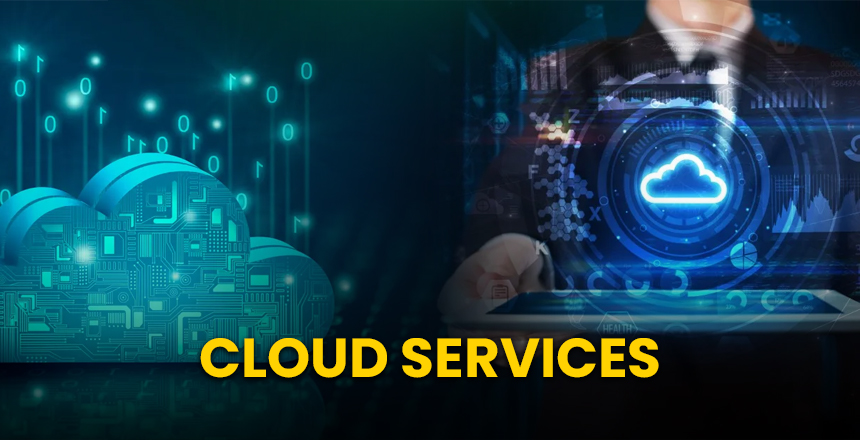The Rise of Cloud Computing
Cloud computing is one of the most revolutionary steps made in modern entrepreneurial and
personal data storage and computing power usage. Ten years ago, cloud services could be
considered a revolutionary idea, and today, they seem like a necessity for the civilized world.
What Are Cloud Services?
Cloud services can be defined as any services that are available through the Internet without
having to be installed directly on the user’s computer or within their company’s data center.
They include Web mail such as Gmail or Outlook.com; file sharing services, which are, for
example, Dropbox or Google Drive; customer relationship management, such as Salesforce or
Slack; online backup services; media streaming services, such as Spotify or Netflix; and finally,
infrastructural services through which organizations can conduct business wholly in the cloud.
The cloud brings all of these services on-demand via the Internet, rather than having to
download the application and/or store the files locally. This makes it more flexible, cheaper, and
provides chances for innovations that cannot be effected in other structures. The cloud services
market globally was estimated to be $427 billion in 2021 and is anticipated to be growing more
than 15% in the next few years.
Benefits of Cloud Computing
There are several major advantages that cloud-based services offer both for individual
consumers and organizations:
- Employment Cost Reductions: This means that after migrating to this cloud they will be able to save money they used to spend on hardware and its infrastructure in their premises. What used to entail setting up own servers, storage, and networking in private data centers can be achieved from economies of scale of major cloud service providers such as AWS, Microsoft Azure, and Google Cloud Platform.
- Scalability: Definitely, cloud computing service providers provide nearly infinite flexibility to scale services up or down. Contrary to the traditional fixed infrastructure models, which require forecasts of future needs at the time of infrastructure design and acquisition, elastic infrastructure allows companies to scale up or down an organization’s resources at any given time based on need.
- Portability that results from using cloud computing-based tools makes it easy for employees to gain access to applications, files, and computing power through any device with an internet connection. This means more of the working options rather than being bound to the office space.
- Innovation: The matter is that cloud services help companies save time on hardware management and shift attention to new technologies, features, and services that can become business priorities. The cloud services have to be very agile, which means that innovation happens at a higher frequency.
- Disaster Recovery: It becomes rather simple to execute disaster recovery plans should an organization opt to store data and applications in the cloud, as these are options for data replication across regions and data centers. This provides protection against data loss resulting from acts of nature, power failure, or exceptional cases of hardware and system failure.
Types of Cloud Services
There are three main models that cloud computing services tend to follow:
- One form of cloud computing is IaaS, which refers to a service that provides clients with basic building blocks of cloud computing, such as physical IT resources, e.g., storage, servers, and a network. Unlike committing to buy hardware, clients can use the service as when they want without having to invest in equipment that they may not be using to its full potential at someother time. Amazon Web Services, with its EC2 virtual servers and its S3 storage service, defined the IaaS market.
- Platform as a Service (PaaS): Cloud-based PaaS offers the platform from which the customer can build, run, and manage web applications and services without the construction of the platform. This is beneficial in allowing software teams to focus their effort more on development than on servers. Today some of the executed examples include Salesforce’s Force.com PaaS for custom CRM application development.
- Software as a Service (SaaS): The SaaS delivery model is where customers use software applications that are hosted in the cloud. This makes for a structured distribution and the product to be easily accessible through any device using the internet. Some examples of SaaS applications are email, collaboration tools, customer relationship management, billing systems, and many others. Examples of such are Microsoft Office 365, Google Cloud Suite, Slack,Salesforce Sales Cloud, etc.
Growth Trends
Here are two major growth factors that are powering adoption of cloud platforms:
- Artificial Intelligence: The use of software and the outsourcing in the cloud has made artificial intelligence expand when reinforced by new chip sets like the GPUs and TPUs. In general, at the current moment, the vast majority of tasks associated with AI are performed in the cloud, allowing scientists to use almost as many resources as they need. Cloud machine learning enables use cases as follows: predictive analytics, computer vision, natural language processing, among others.
- Edge Computing: This means the processing of data takes place a little closer to the center than the core cloud data centers, although they act as the primary computational power processing data from settings such as manufacturing floors, retail outlets, or 5G cellular masts. Enterprise use of edge computing is expected to increase to nearly 75% of data use within the next couple of years, states Gartner. Edge computing means making analytics at the edge, which saves time and provides such possibilities as smart factories, self-driving cars, and intelligent traffic signals.
Risks Around Cloud Adoption
There are also some downsides for organizations to consider as they weigh migrating business
systems to the cloud:
- Security & Compliance: Such concerns about the cloud-based storage of important customer and business data with third-party cloud vendors can be reasonably justified on security and compliance fronts. Multinationals, particularly in the medical field, may have certain restrictions regarding the processing of data.
- Multi-cloud solutions give some level of flexibility, but due to the nature of some, especially solutions from some cloud providers, they become very locked in to specific cloud service providers, meaning customers have limited options when they want to transition to another cloud provider later on. Cloud-hosted data possibilities are, among others, portability.
- Connectivity Dependence: This means that if a company adopted the use of cloud services, then this means that the organization will be highly reliant on internet connectivity at all times. Cloud application availability and response time will be affected whenever there’s a breakdown of connectivity or performance problems.
The Future of the Cloud
Cloud computing is a category with tremendous disruptive effects over the last ten years
regarding the way companies design and deploy IT environments and applications. Currently,
cloud service is an important part of operations in almost all organizations. It will continue to
grow as cloud platforms strengthen innovations on artificial intelligence, edge computing
services, 5G networks, and IoT. In the foreseeable future, cloud adoption will be the biggest
differentiator that will catalyze progress in enterprise technology more than any other trend to
date.








